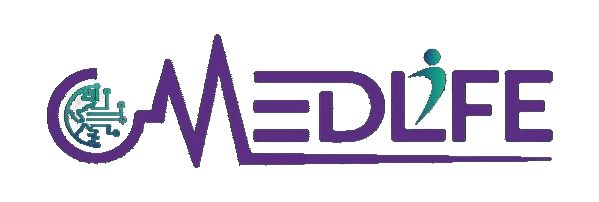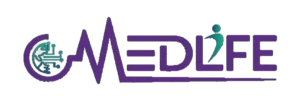As we approach 2025, the landscape of medical billing is on the brink of a major transformation. With advances in technology, changing regulations, and evolving patient expectations, the next decade promises to be a dynamic period for healthcare providers and medical billing professionals. At the heart of this change is the ongoing push for greater efficiency, accuracy, and patient-centric approaches. In this blog, we’ll dive into the trends and technologies that are set to revolutionize the medical billing industry, helping you stay ahead of the curve and thrive in the coming years.
The Future of Medical Billing: Key Trends to Watch
As the healthcare sector continues to evolve, medical billing will follow suit, ushering in new technologies and practices designed to make the process smoother, more accurate, and more efficient. Here’s a look at some of the top trends we expect to shape the future of medical billing in 2025 and beyond.
1. Automation and Artificial Intelligence (AI) Will Take Center Stage
The adoption of automation and artificial intelligence (AI) in medical billing is poised to revolutionize how the industry operates. AI-powered tools are already playing a pivotal role in streamlining administrative tasks, reducing human error, and speeding up claim processing.
Automation of Routine Tasks
As AI technology becomes more advanced, tasks like data entry, claim submissions, and payment posting will be fully automated, allowing staff to focus on more complex issues. This will not only increase efficiency but also significantly reduce errors that occur during manual entry.
AI-Driven Accuracy
AI can learn from historical data and past mistakes, improving accuracy over time. It can also provide real-time error detection, reducing claim denials by ensuring that all coding and billing information is accurate before submission. AI’s ability to identify patterns will also allow for predictive billing practices, enabling providers to anticipate and prevent issues before they arise.
2. The Integration of Telemedicine and Virtual Care Billing
Telemedicine has seen exponential growth, especially in the wake of the COVID-19 pandemic, and it’s not showing any signs of slowing down. In fact, the integration of telemedicine with billing systems is expected to become even more seamless in the years to come.
New Billing Codes for Telehealth
As virtual consultations become more common, there is an increasing need for billing codes specific to telehealth. Healthcare providers will need to adapt their billing systems to include new codes for telehealth services, ensuring that medical billing services are reimbursed properly.
Complex Billing for Remote Monitoring
With remote patient monitoring devices becoming more widespread, integrating these into medical billing systems will be crucial. Healthcare providers will need systems capable of accurately tracking and billing for services delivered remotely.
Telemedicine Payment Models
New reimbursement structures will emerge to accommodate telehealth, with insurers needing to develop new guidelines for virtual care. As these changes unfold, medical billing systems will need to remain flexible and adaptable to meet the needs of this growing field.
3. Value-Based Care Models and Outcome-Based Billing
The shift toward value-based care, where healthcare providers are reimbursed based on patient outcomes rather than the volume of services rendered, is another major trend expected to impact medical billing in 2025.
Tracking Patient Outcomes
To align with value-based care, billing systems will need to collect and process data related to patient outcomes. This will require advanced analytics capabilities to track and report on the effectiveness of treatments and the quality of care provided.
Complex Reimbursement Models
As value-based care takes hold, reimbursement models will become more complex. Providers will need to ensure that billing systems can accurately track patient progress, manage bundled payments, and report on performance metrics.
Patient-Centric Billing
With a focus on outcomes, billing will become more patient-centric, with transparency and communication playing key roles. Patients will need easy access to information about their treatment plans and the costs associated with them.
4. Enhanced Data Security and Compliance
With healthcare data increasingly being digitized, ensuring that patient information remains secure is more important than ever. In the coming decade, healthcare providers will face more stringent regulations regarding data privacy and security, making it essential to stay compliant with industry standards.
HIPAA Compliance
As the industry adapts to new technologies, healthcare organizations will need to maintain strict compliance with HIPAA (Health Insurance Portability and Accountability Act) to ensure that sensitive patient information remains secure. This includes encryption of medical records, secure data transmission, and compliance audits.
Blockchain for Billing Transparency
Blockchain technology is already being explored for its potential to improve transparency and security in medical billing. By creating immutable records of transactions, blockchain can ensure that all billing activities are recorded in a transparent, tamper-proof way, helping reduce fraud and billing errors.
Cybersecurity Investment
With the increasing use of cloud-based medical billing systems, healthcare providers will need to invest in robust cybersecurity measures to protect patient data from breaches and cyberattacks. Multi-factor authentication, secure cloud storage, and regular data encryption will be key to safeguarding sensitive information.
5. The Rise of Predictive Analytics in Billing
The integration of predictive analytics into medical billing systems will enable healthcare providers to better forecast revenue, identify potential billing issues, and reduce claim denials. By analyzing historical billing data, predictive analytics can help providers anticipate trends and optimize their billing processes.
Forecasting Denials
Predictive analytics can analyze past claims data to identify common causes of denial, allowing providers to proactively address these issues before claims are submitted.
Optimizing Cash Flow
By forecasting future reimbursement trends and analyzing the timing of claims, healthcare providers can optimize their cash flow and make more informed decisions about their finances.
The Road Ahead: How Healthcare Providers Can Prepare for 2025 and Beyond
As we look toward 2025 and the next decade of medical billing, it’s clear that technology will continue to drive the industry forward. Healthcare providers will need to stay informed about these trends and make the necessary investments in technology, staff training, and compliance practices to stay competitive in an ever-evolving landscape.
Invest in Technology
Healthcare providers should focus on adopting advanced billing systems that integrate with EHRs, streamline workflows, and leverage AI and automation to reduce errors and speed up claim processing.
Focus on Training
As billing systems become more complex, ongoing staff training will be crucial to ensure that employees are equipped to handle the latest tools and regulations.
Prioritize Patient Experience
With patients becoming more involved in their healthcare finances, providing transparent, patient-friendly billing experiences will be a key differentiator for healthcare providers.
Conclusion
The future of medical billing holds great promise, driven by technological advancements and an evolving healthcare landscape. By embracing automation, AI, predictive analytics, and secure data management, healthcare providers can streamline their billing processes, reduce errors, and enhance revenue cycle management. As the healthcare industry moves toward value-based care and patient-centric solutions, those who stay ahead of the curve will position themselves for success in the next decade.
MedLife is committed to helping healthcare providers navigate the complexities of medical billing with innovative solutions and expert support. Contact us today to learn how our medical billing services can drive efficiency, accuracy, and profitability for your practice.


